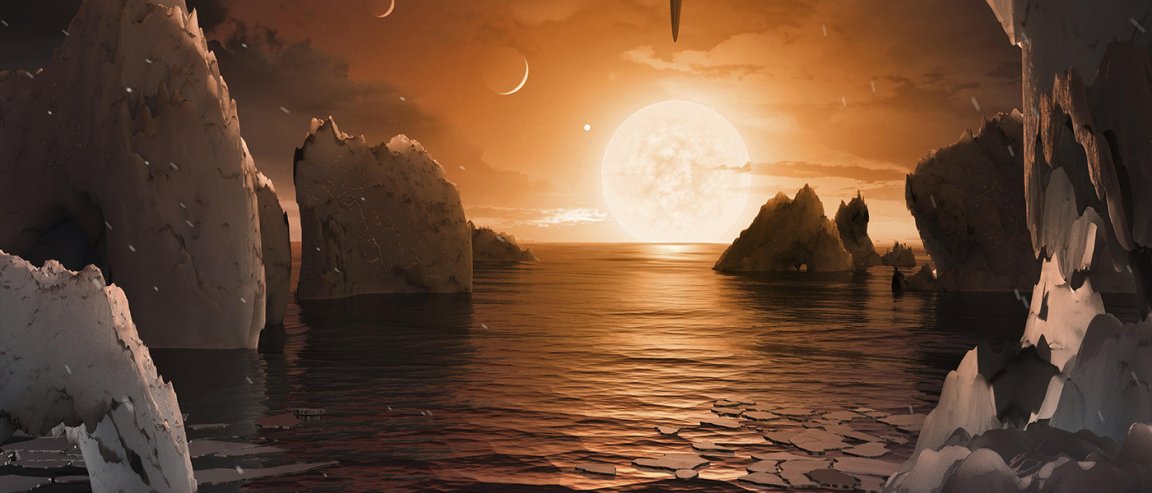
An Astounding Discovery
In February, scientists from the European Southern Observatory and NASA announced the discovery of a new solar system —TRAPPIST-1. It has seven Earth-sized planets orbiting a dwarf star, three of which are in the star’s habitable zone.

Although TRAPPIST-1 is 40 light-years away, its remarkable similarities to our own solar system make the discovery very exciting to scientists. Of all the solar systems we know of, we’ve never found one with seven planets — let alone multiple Earth-sized planets. TRAPPIST-1’s three habitable planets have density measurements that make them appear to be Earth-like worlds.
Given what TRAPPIST-1’s current configuration looks like, the planets located in the habitable zone or “goldilocks zone” could have water — at least theoretically. However, since its solar system’s sun is smaller than ours, the planets would require a tighter orbit in order to support surface water.
Armed with insights we’ve gathered about our own solar system in recent decades, we have the knowledge and resources to study TRAPPIST-1 — and possibly find life beyond our own planet.
Life Beyond Earth
Scientists also believe that some of the planets in TRAPPIST-1 are “tidally locked” to their star. That means one side of the planet constantly faces their sun, bathing it in perpetual daylight, while the other side is always in the dark. While that doesn’t sound much like the life we know on our planet, experts believe it wouldn’t completely negate the possibility of life: what really matters is the atmosphere.
We won’t have to wait too long to gain further insight into kind of atmosphere these planets have: once the James Webb Space Telescope launches in October of next year, scientists will be able to study the planets more in-depth. Our knowledge of how tidally locked planets in our own solar system manage such extreme temperatures — based on what we’ve already learned from Neptune and Jupiter — will also lend itself to a better understanding of how the TRAPPIST-1 planets work.
Granted, everything that we know about life stems from our understanding of life on Earth—where we experience both day and night. It’s wholly possibly that in planets where a diurnal cycle isn’t the norm, life develops very differently.
But as Dr. Jessie Christiansen, an astronomer at the NASA Exoplanet Science Institute at the California Institute of Technology, notes while speaking to the Christian Science Monitor, we could liken this to conditions some creatures on our planet know well: the life aquatic. “If you think about life in the deep ocean,” Dr. Christiansen says, “it has evolved without a true diurnal cycle.”
Here on our own planet, we are still constantly surprised by life discovered in sea floors, icy climates, deep caves, and other extreme settings. So, that being said, the idea that life could exist in TRAPPIST-1 shouldn’t be too hard to fathom.